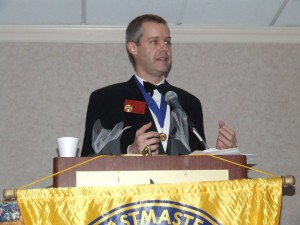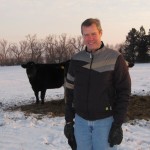 Running for Second Vice President is an interesting experience for me, particularly running against other candidates. Of course, running for a world-wide office is considerably different from running at the district level. When I was Area Governor, I was appointed, and for Division Governor, I was unopposed.
Running for Second Vice President is an interesting experience for me, particularly running against other candidates. Of course, running for a world-wide office is considerably different from running at the district level. When I was Area Governor, I was appointed, and for Division Governor, I was unopposed.
When I ran for Lt. Gov’r Marketing (LGM), there were two other candidates (rare in my district!), and I took it pretty seriously. I developed a tri-fold brochure and a small poster to take to all the division contests, and the other two candidates were at all the same contests with a flier as well.
At the election, I gave a two-minute speech, and I honestly don’t remember a word of it at this point, but I guess I got through it (I was an ATM-B at the time). No one got a majority at the first vote, it took a second vote before I got a slight majority (64-61, I think). It really was a great experience!
As is typical, I was unopposed for Lt. Gov’r Education and District Governor (photo above). When I announced for International Director, someone else also announced, but a couple of months later, he dropped out due to a huge increase in responsibility at work.
However, I still ran it as if I were opposed, hitting 11 out of 16 district conferences in the region in the fall and spring (the others were on conflicting dates). I had a professional photograph taken, did a tri-fold brochure and a posterboard to take to conferences, and built a web site. I had intended to set the campaign up as a High Performance Leadership project, but I have to confess that when I became unopposed, I didn’t follow through on that idea.
In many ways, I regret that no one was running against me. I believe a little friendly competition can bring out the best. Still, I have a chance to do that now, as there are at least three other people, all incredibly talented, also running for Second Vice President.
I really enjoyed handing out the announcement cards at the end of the Palm Springs convention last month. It gave me a chance to confirm what some people were suspecting, and I had some fascinating (though brief) conversations. It was my last opportunity to see most of these Toastmasters leaders face to face before the convention in Las Vegas next August!
I will be reaching out to Toastmasters leaders in the coming months with personal phone calls (campaign rules sharply limit my use of other means), and I look forward to finding out more about what YOUR concerns are, where we’re doing well, what we can improve upon, and sharing my ideas about future directions.
Please feel free to contact me directly (details are at the bottom of my site’s home page), or if appropriate, just add a comment on my blog here, I’ll reply!
 I’ve seen a lot of different practices in districts around the world. I’d like to share my experiences, and make some suggestions on what seems to work best for this tricky topic.
I’ve seen a lot of different practices in districts around the world. I’d like to share my experiences, and make some suggestions on what seems to work best for this tricky topic.


